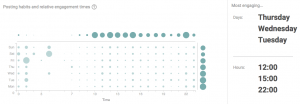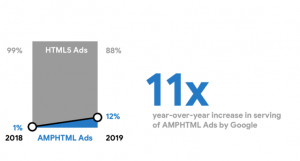
Pop-up ads are often employed by websites trying to push ad content to the forefront of a visitor’s attention. Pop ups established their priority in the 1990s and 2000s, with the first browser-based pop-up blockers emerging in the early 2000s.
Their cousin, the hover ad (also known as the lightbox ad), arrived on the scene later and are frequently used today. Unlike pop-ups, hover adds open on the same browser window or tab a user is on. A lightbox opens in the center of the page, obscuring the actual page content. This method is frequently employed by news and media sites, but is also easy to add to corporate websites, which has made them a growing trend for marketers who want to highlight content or promotions.
With billions of pop-ups generated every year, the question remains: do pop-up ads really work?
Part 1: What do Users Think About Ads?
If you’re designing your website primarily for humans, and not search engines (of course you are!), user experience should be your first focus area when considering ads of any kind. How do users feel about ads?
- 68% of searchers would want to block a site from search results because it has too many ads (source)
- 69% more internet users used an ad blocking solution in 2014 than in 2013 (source)
- 45% of adblock users never want to view any advertising and want as many ads as possible removed from websites (source)
- Most users don’t even see pop-ups anymore. All major web browsers have built-in pop-up blockers.
- Ad agencies aren’t able to measure how effective your spend is: Half of agencies are not sure if they’re delivering ROI from online ads. (source)
What we know is clear: users say they don’t like ads, and advertising spend is notoriously difficult to track and tie to sales. So that’s it, right? Pop-ups must be out of the picture.
Part 2: How do Users Actually Interact with Pop-ups?
Here’s where it gets interesting. Despite self-reporting that ads provide a poor user experience, when pops are implemented appropriately, they can actually be incredibly effective. But I don’t mean pop-up advertising as it was used in the Wild West Internet of 2002, I mean lightbox-style pop-ups that you implement selectively on your own website. Here are the facts:
- Copyblogger found that implementing a pop-up strategy immediately boosted email list opt-ins. (source)
- Pop-ups generally have decent click through rates – often around 2% – higher than other kinds of ads. (source)
- Pop-ups helped Entrepreneur.comincrease subscriptions 86% and sales 162%. (source)
Despite their anti-ad attitude, it seems that users often engage with pop-up ads. But they might not be the greatest idea. Copyblogger’s Beth Hayden noted that, despite the efficacy of pop-ups, she actually received hate mail when the site’s pop-up mechanism was implemented.
Part 3: So What’s a Marketer to Do?
First, abandon the technical “pop-up” and embrace the “hover” or “lightbox” style of promotion. They provide a better, more consistent experience and shouldn’t annoy people too much, since they’re not actually opening a new window.
Second, test, test, test, and test some more. If you decide to go from a pop-up free to a pop-up embracing site, you have to be prepared to take a risk. Whether or not pop-ups are effective will depend on your content and your personas – what works well for one blog or corporate site may not be successful for you. If you don’t have a way to test and measure results, or if you don’t work in an environment where a failed test is an acceptable risk, avoid pop-ups.
Pop Ups that Might Work on Corporate Sites
- Subscriptions. Dan Zarrella found that implementing a hover-style popup doubled subscription rate, without increasing bounce rate.
- Premium Content. If you’re promoting a new white paper, eBook, or other piece of inbound-friendly, premium content, a pop-up may be a successful way to draw attention to it and increase conversions.
- End-of-page Hover Ads. Sometimes the problem with hover ads is that they load right away when users reach a page, and users close them immediately since they don’t know anything about the site they’ve landed on. Instead of taking this approach, try using a hover ad when visitors are further down on a page – like the end of a blog post.
Always Think Inbound.
If you decide to test a form of pop-up or lightbox ads on your own site, always do it with inbound best practices in mind. Be prepared to test for a specific amount of time and evaluate your results after that period before making a permanent decision. Especially when you are interrupting the user experience, be sure you are offering relevant, helpful content, The right kind of pop-ups can improve website conversions, but implementing a strategy that annoys visitors will end your relationship forever. Your website is your call, but my preference would be to avoid pop ups in favor of other conversion rate optimization techniques.
(159)







